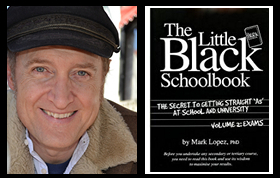Dr Mark’s The Meaning in a Nutshell
Stanley Kubrick (director), Peter George, Terry Southern and Stanley Kubrick (co-writers), Dr. Strangelove or: How I Learned to Stop Worrying and Love the Bomb (1964)
The black comedy Dr. Strangelove or: How I Learned to Stop Worrying and Love the Bomb (1964) was directed by Stanley Kubrick from a screenplay he co-wrote with Peter George and Terry Southern that was based on the novel by Peter George Red Alert (1958). It reflects the sentiments of the pacifist nuclear disarmament movement that the thinking behind the defence strategies of the nuclear arms race, the deterrence of Mutually Assured Destruction (MAD), and the policy of maintaining permanent readiness to facilitate an overwhelming nuclear first strike, was indeed ‘mad’ and could potentially lead to the destruction of civilisation. The film aims to create a sense of precariousness regarding the chances of a nuclear conflict between the Cold War superpowers, the United States and the Soviet Union, drawing attention to its destructive potential to imply that humanity needs to find a better, peaceful way to co-exist. The film presents the view that in the Cold War, even if you win, you lose, since by destroying your enemy you also destroy yourself.
The film posits that it was possible for an insane general to single-handedly usher in a nuclear conflict that could destroy everyone. The film argues that the security measures to prevent a nuclear catastrophe can, in certain circumstances, contribute to a nuclear catastrophe by precipitating a chain of events leading to a nuclear confrontation that cannot be averted once started. The keeping of the Strategic Air Command on what seems to be a permanent state of alert so it can launch a nuclear attack at short notice is presented as concerning rather than reassuring. The film suggests that a policy of defence is no defence if the nation seeking to defend itself is destroyed in the process.
The film presents the United States as the most dangerous of the superpowers, drawing attention to the prevalence of virulent anti-communism and a gung-ho attitude among both senior commanders and junior officers. Because of the nuclear arms race, a dangerous amount of power has been placed in the hands of men who cannot be trusted to handle it responsibly, since some of them have right-wing extremist views and at least one of them could turn out to be insane. In addition, the film also seeks to discredit the military high command by linking it to Nazism, revealing a key military advisor to be an unrepentant and unreconstructed former Nazi scientist who was brought to the United States to contribute to their military efforts in the Cold War rather than be punished for war crimes. To further denounce the military, the film also suggests that there is a somewhat perverted sexual undercurrent operating psychologically that fetishizes military weapons and their power. This is meant to add to the fear that the film seeks to evoke regarding the game of brinkmanship being played by military and political commanders.
Much of this mocking of the military is conveyed in the scenes in the command centre, known as the ‘War Room’, where the behaviour of the commanders satirises the military thinking of the time, such as concern about a ‘missile gap’ with the Soviet Union that was used to justify the production of more nuclear weapons. Pacifists in the nuclear disarmament movement were alarmed at the continued production of nuclear weapons, arguing that there were already too many and all of them were dangerous.
The film concludes with a montage of nuclear explosions. The feared nuclear holocaust is not averted.
Student resources by Dr Mark Lopez
© Mark Lopez 2021 All RIGHTS RESERVED
The purpose of the concise notes of Dr Mark’s The Meaning in a Nutshell is to provide much needed help to students seeking to unlock the meaning of the texts with which they have to deal. (More elaborate notes are provided in lessons as part of my private tutoring business.)
Subject: Dr. Strangelove meaning, Dr. Strangelove themes, Dr. Strangelove analysis, Dr. Strangelove notes
